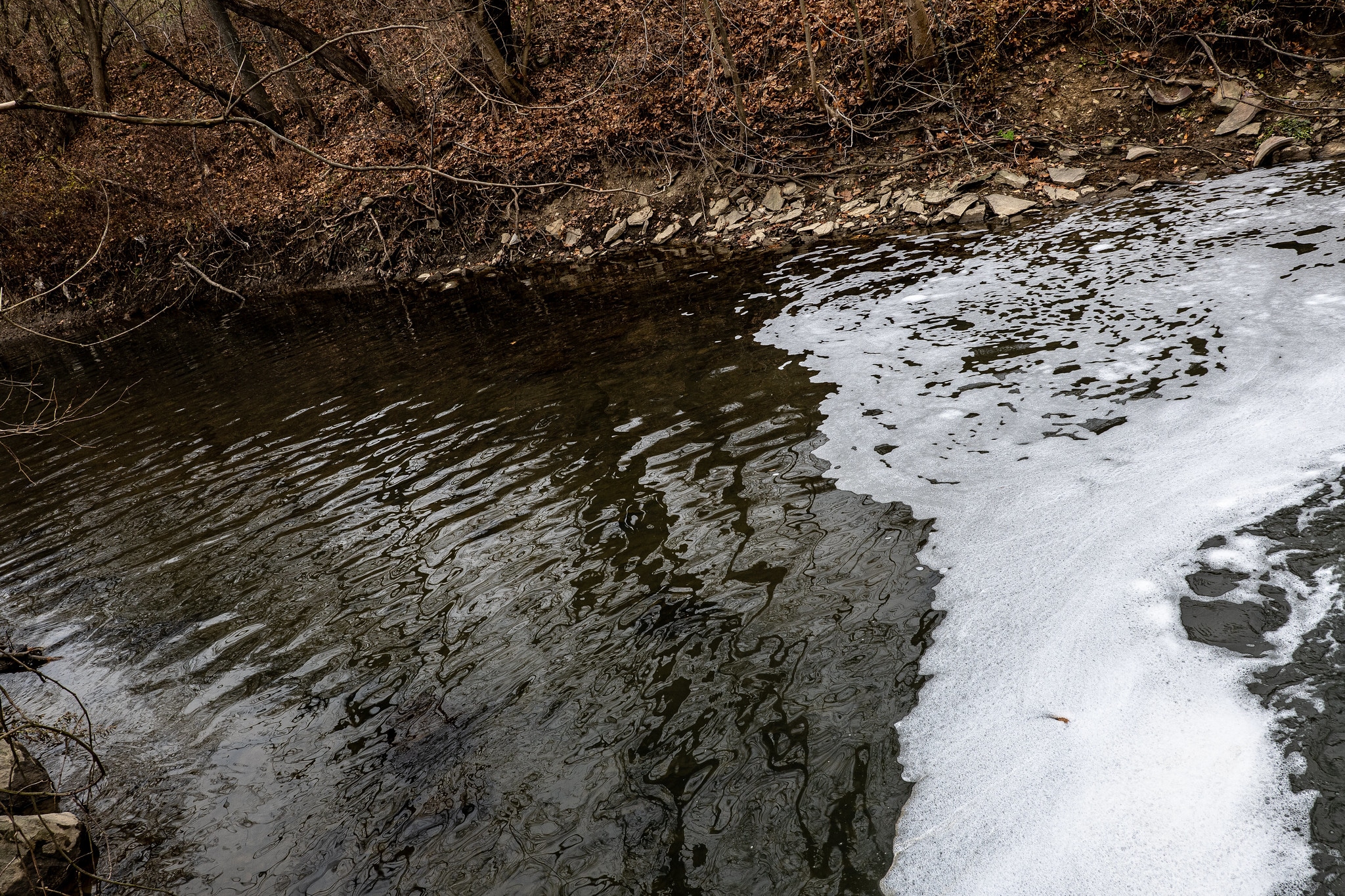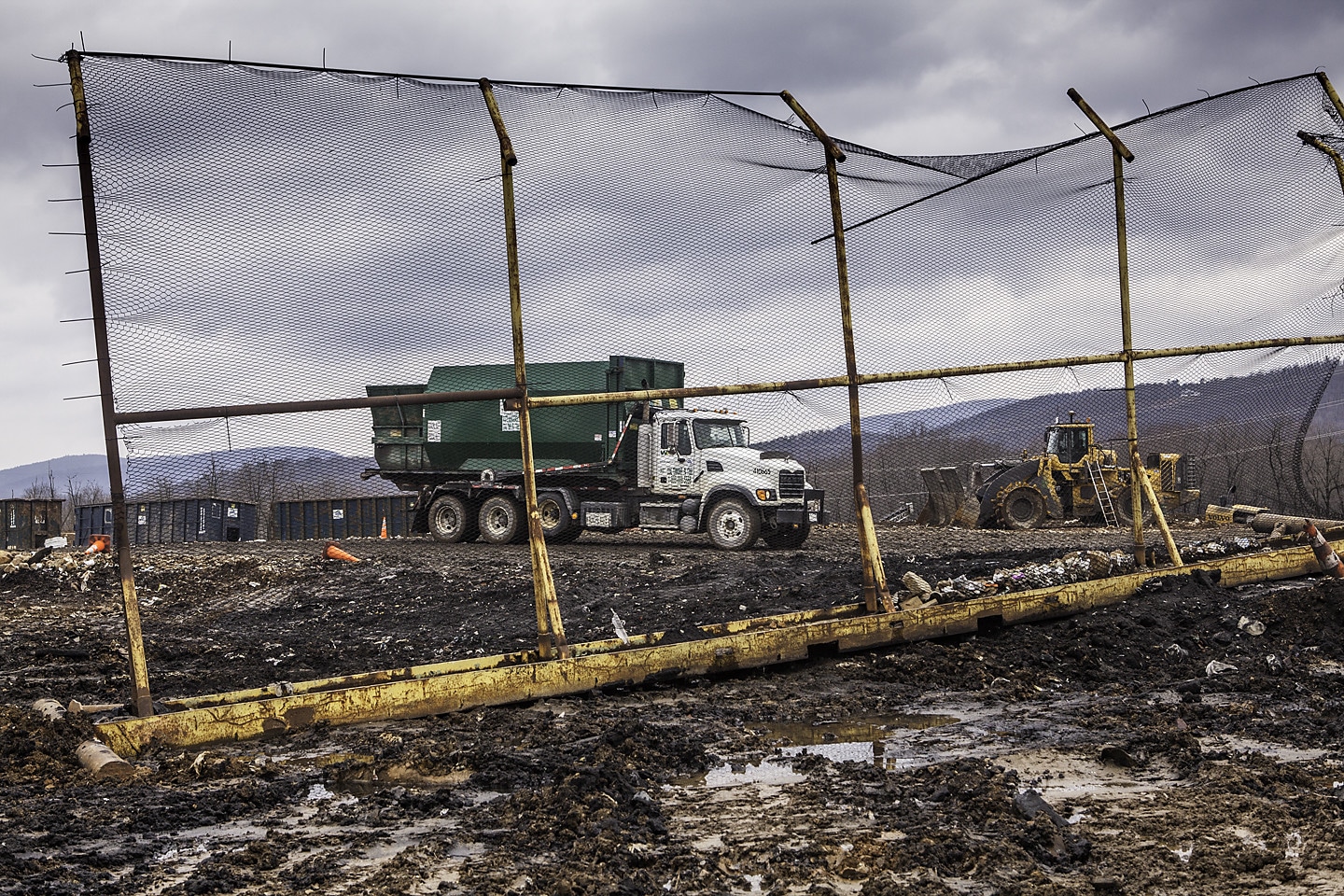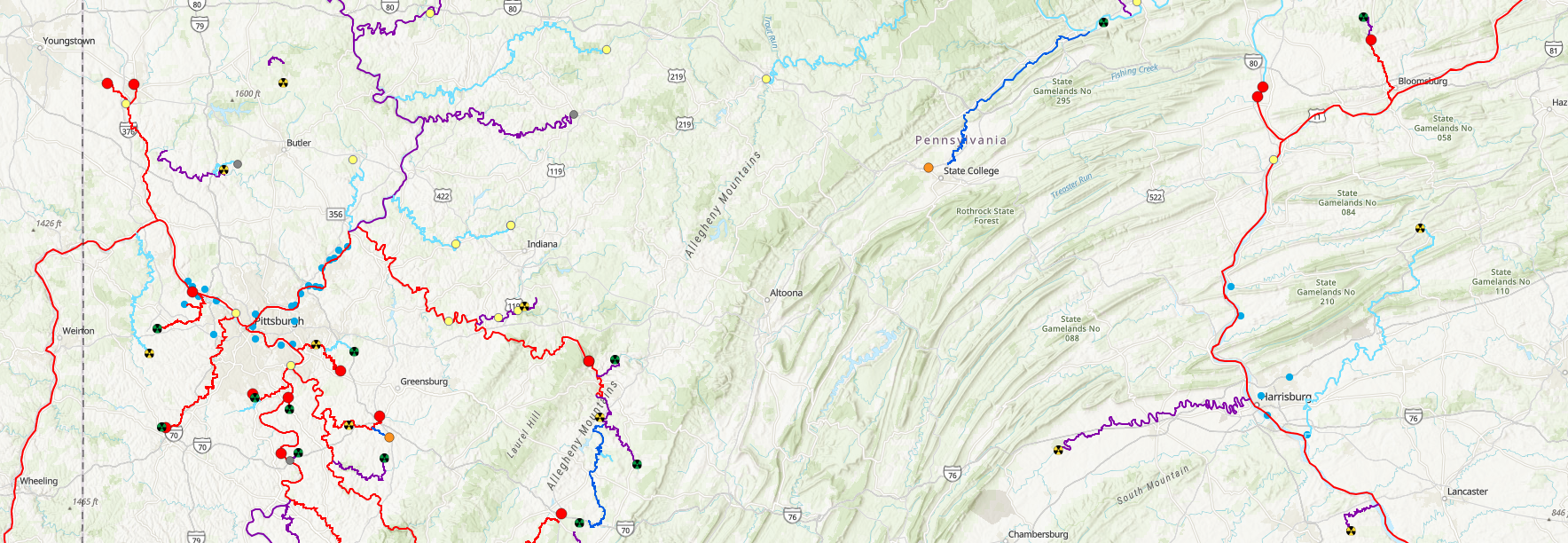Pennsylvania Regulators Won’t Say Where 66% of Landfill Leachate w/ Radioactive Material From Fracking is Going…”It’s Private”
Pennsylvania Regulators Won’t Say Where 66% of Landfill Leachate w/ Radioactive Material From Fracking is Going…”It’s Private”
A PUBLIC HERALD EXCLUSIVE PODCAST
SUBSCRIBE
iTunes | Stitcher | Google Play | Podbean | Radio Public | Spotify | Castbox
DONATE
Public Herald is a nonprofit newsroom that holds those in power accountable. You can receive our latest breaking stories by subscribing to our newsletter or becoming a Public Herald Patron. We will continue to update this article and the TENORM Leachate Map as regulators are forced to release new data.
by Joshua Pribanic and Talia Wiener for Public Herald
August 5, 2020 | Project: newsCOUP, Radioactive Rivers
In Pennsylvania, the final destination of 66 percent of liquid waste from 30 municipal landfills accepting fracking’s oil and gas waste remains unknown. Oil and gas waste from fracking contains high concentrations of Technically Enhanced Naturally Occurring Radioactive Materials (TENORM), and wherever this radioactive TENORM waste is stored, rain carries water-soluble radionuclides such as Radium-226 through the landfill to create what’s known as leachate – the landfill’s liquid waste. This TENORM-laden leachate is commonly sent to Waste Water Treatment Plants (WWTPs) that are not equipped to remove it before it’s dumped into rivers.

caption: A discharge at a sewage waste treatment plant, which takes TENORM-laden leachate from Arden Landfill, covers Chartiers Creek in white foam (Washington County, Pennsylvania). © Joshua B. Pribanic for Public Herald
If you’re talking about fracking, you’re talking about TENORM, which is present throughout the process in waste streams like pipe scale, sludge, drill cuttings, wastewater, and contaminated equipment. What starts as Naturally Occurring Radioactive Material (NORM) contained deep beneath the Earth’s surface is brought to the surface by fracking and concentrated into TENORM.
Public Herald has made several attempts with the Pennsylvania Department of Environmental Protection (DEP) to verify the destination of landfill leachate containing TENORM, but DEP stopped responding to our inquiries after we published the August 2019 statewide report on how fracking’s radioactive waste enters public waters. Our team has since been forced to rely on delayed Right-to-Know Law requests and DEP’s limited online data.
From the limited data DEP provided to Public Herald in 2019, and from what our team in 2020 has discovered, we now know and mapped the whereabouts of 34 percent of leachate from a limited number of landfills accepting fracking’s oil and gas waste in Pennsylvania.
Public Herald’s TENORM Leachate Map illustrates where (in red) TENORM from fracking is escaping into public waters, and where (trefoil symbol) it’s being stored in Pennsylvania. Map created by NOVARE Collective using Fractracker’s 2019 version and Public Herald’s research. Click for interactive map »
Map 2019 DEP Response:
13 landfills, 14 WWTPs
Map 2020 Public Herald:
30 landfills, 18 WWTPs
What we’ve discovered is that DEP’s 2019 response to Public Herald was missing 17 landfills and 4 WWTPs. It begs the question – does the state really not have a handle on tracking TENORM-laden leachate? Or is the lack of transparency an attempt to keep the public uninformed?
Pennsylvania is known as one of the largest traffickers of waste in the country, producing and importing large amounts of waste for its 45 landfills. The 30 residual waste landfills we’ve identified that have accepted fracking’s TENORM waste now actively store dangerous amounts of TENORM material — mainly Radium-226.
In the last response we received from DEP, Director of Communications Neil Shader, told us he wanted to assure the public that “there are very strict regulations as to how much radioactive material a landfill can accept. There are radiation meters at landfills, and there’s a certain amount they’re allowed to accept per year.” Shader continued, “It varies by landfill, but I would like to make sure people are comfortable knowing there’s only so much radioactive material that can be accepted by any individual landfill.”
Shader wanted to be clear the DEP will work with anyone who has a complaint about discharge to be sure a facility’s National Pollutant Discharge Elimination System (NPDES) permit is brought into compliance.
The problem is that an NPDES permit compliance, in these cases, doesn’t include regular monitoring for radioactivity.
What this means is that leachate, which DEP itself has shown is high in radionuclides, is not being tested as it’s being discharged daily from a WWTP to Pennsylvania Rivers.
caption: Table: DEP test results of Radium-226 from their 2016 TENORM study show consistent levels of Radium-226 in landfill leachate that’s treated at WWTPs and discharged to rivers.
Tracking Radium
Radium-226 is a naturally-occurring element found in oil and gas waste with a half-life of 1,600 years — it will accumulate in the environment over time if it can escape a landfill, as it does when the landfill leachate is sent to WWTPs.
The maximum contaminant level for radium in drinking water is 5 picocuries per liter (5pCi/L). And that’s the only guideline that WWTP operators have to reference for NPDES permits, though they have no real-time monitoring for radium.
Pennsylvania state records show that fracking wastewater (a.k.a. produced water, flowback, or brine) from unconventional drilling can be as high as 26,600pCi/L for Radium-226. Pennsylvania landfills have made it possible to take this wastewater and store it as residual waste by using machines or wood chips to turn it into a solid.
While Public Herald’s Pennsylvania TENORM map has put the possible impacts of radium entering public waters into perspective, we are still missing 66 percent of the leachate data regarding the final destination of fracking’s TENORM waste. Why?
Though it contains hazardous materials, oil and gas waste is not considered “hazardous” by the EPA. In 1988, in the Resource Conservation and Recovery Act (RCRA) Benstell and Bevin Agreements, the EPA declared that even though oil and gas waste contains toxic heavy metals, carcinogens, and radioactivity, regulating the waste as “hazardous” would cause “a severe economic impact on the industry and on oil and gas production in the U.S.”
NORM and TENORM from oil and gas operations are also not covered by other federal regulations governing radioactive material, including the Atomic Energy Act.
That leaves it up to Pennsylvania to track oil and gas radioactivity as “residual waste” and send it to the same landfills as household trash.

Wayne Township Landfill in McElhattan, PA, owned and operated by the Clinton County Solid Waste Authority. The landfill disposes of gas industry drill cuttings, among other waste, and DEP is not saying where their leachate it going. © Steven Rubin for Public Herald
According to the DEP, the agency is tracking how much TENORM is coming into a landfill by limiting the amount that a landfill can receive in a given year.
But DEP is not tracking how much TENORM is leaving a landfill via leachate to the WWTP. The DEP says that the transaction is private between the two entities: the landfill and the treatment plant.
When we told Dr. Julie Weatherington-Rice, a semi-retired earth scientist with a PHD in soil science and adjunct professor for Ohio State University, about DEP’s landfill tracking system for TENORM, she said, “[DEP] has no way of knowing what’s going in” to a landfill in a given year using gate post radiation systems for trucks to pass through and handheld geiger counters.
Dr. Weatherington-Rice continued, “Those gate posts [at landfills] were never designed for that kind of [low level radiation] scanning. They were designed for hospital waste, for something that decays rapidly. Pennsylvania is counting on smoke and mirrors for protection because they’re not using the right test and they’re not using the right equipment. They don’t know what they put in that landfill. They think they do, but they don’t.”
How much leachate are we talking about from 30 landfills? The numbers we have on record suggests there’s millions of gallons of TENORM-laden leachate per day traveling across the state.
So while the tracking of TENORM from oil and gas sites to landfills and onto processing facilities by the DEP is key to understanding public health and environmental risks from both short- and long-term impacts associated with radioactive waste streams, DEP only has parts of the data with faulty testing and alone is the responsible government agency for this data in Pennsylvania.
In 2015, DEP Deputy Secretary Scott Perry cited agency data hailing the value of radioactive oil and gas waste, rather than addressing its potential health threats:
“For the cuttings alone we generated, just last year, over two million tons and about 91% of that went to landfills. There’s actually an interesting environmental benefit there. Landfills need to put on what’s called a daily cover, so that the trash doesn’t continue to blow off the landfill, and create problems for the community.”
In 2016, the PA DEP released a TENORM study that claimed “little potential for radiation exposure from oil and gas development” at the same time finding examples of TENORM contamination in almost every soil and water sample performed. While the state’s press release painted a picture of TENORM safety and containment, the conclusions and details of the study were far from it. The study alerts to future problems if TENORM were to continue being introduced to public waters.
caption: DEP 2016 TENORM Study conducted by Permafix warns of high detection of soil contamination of Radium-226 at treatment facilities.
According to the Attorney General Josh Shapiro, the DOH has agreed to make “more of an effort to address the problem” from fracking by allocating one million dollars a year for a three-year study.
Laura Dagley, the Medical Advocacy Coordinator for Physicians for Social Responsibility Pennsylvania (PSR), spoke to DOH Secretary Dr. Rachel Levine after Shapiro’s Grand Jury announcement. Dagley told Public Herald the DOH isn’t targeting TENORM during their study. “We have urged the DOH to address this current health threat with a sense of urgency to protect Pennsylvanians,” Dagley stated. “While the DOH has announced a three-year investigation into the increased cancer cases in the region, they have decided to exclude any analysis of radioactivity.”
Dagley’s concern is that high levels of radium exposure are known to cause malignant bone tumors.

“This decision by the DOH ignores current research and the wishes of public health organizations and impacted community members,” Dagley continued. “It follows a pattern of a passive response to health concerns surrounding the industry, and ignores the growing concerns outlined by the work of the Public Herald and Justin Nobel.”
“State agencies have been able to dodge the TENORM issue for years,” Public Herald co-founder Joshua Pribanic said in a July 1 Public Herald newsCOUP broadcast.
Other co-founder Melissa Troutman agreed, stating that DEP’s lack of action under the leadership of Perry has and will continue to negatively affect communities across the state.
“DEP has been complicit in the cover-up of just how radioactive this industry is,” Troutman said.
Despite DEP’s lack of transparency, the Department has recently acted on issues regarding landfill leachate — not addressing TENORM.
In November 2019, Public Herald sent an email to DEP inquiring about three specific facilities: Keystone Sanitary Landfill, Westmoreland Sanitary Landfill, and Covanta Environmental Solutions. DEP never responded to Public Herald but cited two of the facilities for violations shortly thereafter. On December 11, 2019, DEP fined Covanta Environmental Solutions $400,000 for violations dating back to 2016. Then, in February 2020, Westmoreland Sanitary Landfill received a $24,000 fine for violations involving improper handling of shale gas drilling waste.
Hope for Ending TENORM’s Loophole
In Pennsylvania, a landfill must obtain federal approval from the U.S. Environmental Protection Agency to transport leachate under a National Pollutant Discharge Elimination System (NPDES) permit. If the leachate ends up at a sewage treatment plant or private treatment facility, as it often does, it is handled at the treatment facilities under a different, state-issued NPDES permit approved by the DEP. The DEP’s NPDES permit doesn’t acknowledge whether the leachate contains fracking waste, and there is no requirement to test for radionuclides.
This leachate loophole was revealed in Public Herald’s August 2019 investigation. State law has allowed fracking’s radioactive waste to enter a landfill, but the radioactive material and toxins in “leachate” that leave that landfill are not tracked since they are no longer classified as fracking waste.
As Neil Shader told Public Herald, it’s a private relationship between the landfill and the treatment authority. “It’s an agreement worked out between those two entities, and, no, DEP does not oversee that private contract for what the treatment facility is taking to inform the landfill.”
That private agreement of fugitive radioactive material in leachate taken by a treatment plant from a landfill has been discharged to the waters of Pennsylvania for nearly a decade.
When Pennsylvania State Representative Sara Innamorato got a hold of the leachate story in 2019, she drafted new legislation now co-sponsored by 20 representatives that could stop TENORM-laden leachate from entering public waters.
“Residents of this Commonwealth deserve to know what industry is doing in their backyard and how those activities will impact their future financial and physical health,” Representative Innamorato told Public Herald.

Pittsburgh State Representative Sara Innamorato who’s creating a bill to stop the TENORM loophole in Pennsylvania. © Joshua B. Pribanic for Public Herald
“Trust between the government and its people can only come with access and transparency to the public record. By obscuring access to this data, the DEP is putting the profit-driven, short-term interest of fracking corporations over the long-term health and well-being of the people of Pennsylvania.”
Kristen Locy contributed to this report
















